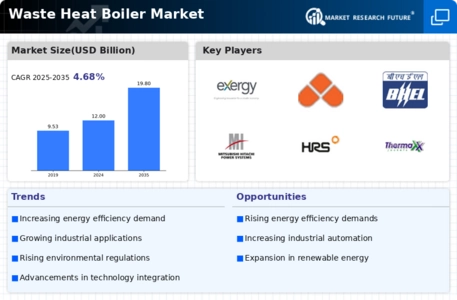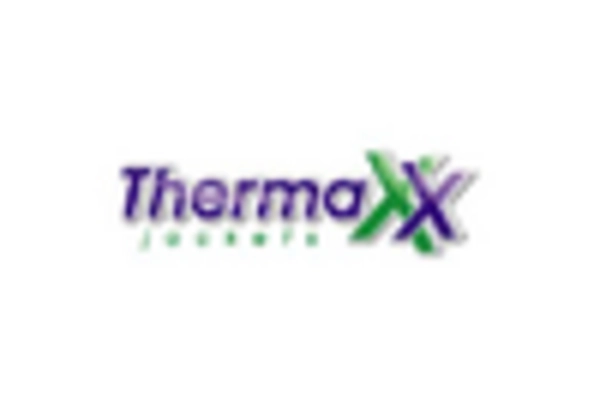Rising Energy Costs
The escalating costs of energy resources are significantly influencing the Waste Heat Boiler Market. As energy prices continue to rise, industries are compelled to seek alternative solutions to mitigate expenses. Waste heat boilers offer a viable option by enabling the recovery of heat that would otherwise be wasted. This recovery process can lead to substantial savings on energy bills, making waste heat recovery systems an attractive investment. Data suggests that industries utilizing waste heat boilers can achieve energy savings of up to 30%. Consequently, the Waste Heat Boiler Market is poised for growth as businesses strive to enhance their energy efficiency and reduce operational costs.
Technological Advancements
Technological advancements in waste heat recovery systems are expected to drive the Waste Heat Boiler Market forward. Innovations in design, materials, and efficiency have led to the development of more effective waste heat boilers. These advancements enable industries to recover a higher percentage of waste heat, thus improving overall energy efficiency. Furthermore, the integration of smart technologies and automation in waste heat recovery systems enhances operational efficiency and monitoring capabilities. As industries seek to optimize their processes, the Waste Heat Boiler Market is likely to benefit from the growing adoption of these advanced technologies.
Increasing Industrialization
The ongoing trend of industrialization across various sectors appears to be a primary driver for the Waste Heat Boiler Market. As industries expand, the demand for energy-efficient solutions intensifies. Waste heat boilers play a crucial role in capturing and reusing waste heat generated during industrial processes, thereby enhancing overall energy efficiency. Reports indicate that industries such as cement, steel, and chemical manufacturing are increasingly adopting waste heat recovery systems. This shift not only reduces operational costs but also aligns with sustainability initiatives. The Waste Heat Boiler Market is likely to witness substantial growth as more industries recognize the economic and environmental benefits of implementing these systems.
Growing Environmental Awareness
The increasing awareness of environmental issues among consumers and businesses is influencing the Waste Heat Boiler Market. As organizations strive to reduce their carbon footprint, the adoption of waste heat recovery systems becomes a strategic priority. Waste heat boilers contribute to lower greenhouse gas emissions by utilizing heat that would otherwise be lost. This alignment with sustainability goals resonates with stakeholders and consumers alike, prompting industries to invest in energy-efficient technologies. The Waste Heat Boiler Market is expected to grow as more companies recognize the importance of environmental responsibility and seek to implement solutions that support their sustainability objectives.
Government Incentives and Policies
Government initiatives aimed at promoting energy efficiency and reducing carbon emissions are likely to bolster the Waste Heat Boiler Market. Various countries have implemented policies that encourage the adoption of waste heat recovery technologies. These incentives may include tax credits, grants, and subsidies for industries investing in energy-efficient solutions. Such measures not only support the financial feasibility of waste heat boilers but also align with broader environmental goals. The Waste Heat Boiler Market could experience increased demand as more companies take advantage of these incentives to enhance their sustainability practices and comply with regulatory requirements.


















Leave a Comment